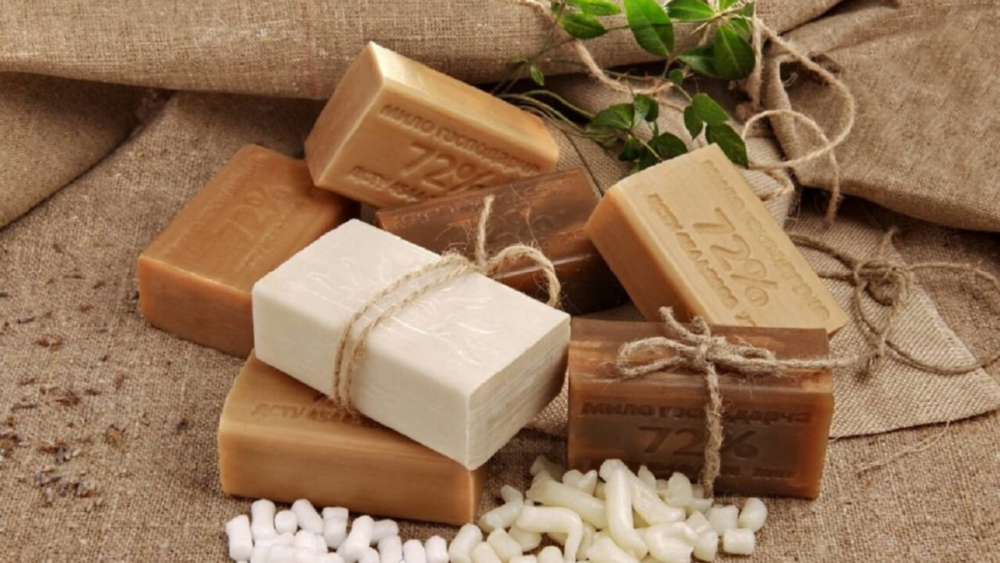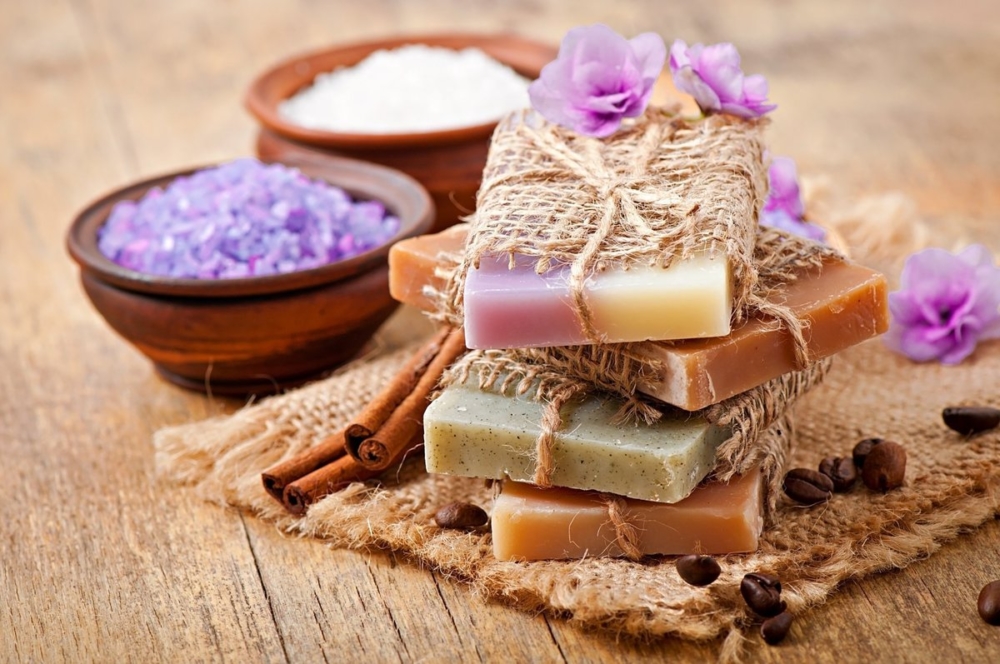Do you know what soap is made of? The very thing that is sold in the household and cosmetic departments of stores, as well as handmade products? They are fragrant with incredible fragrances, decorations, delight the eye with unusual colors. All this magnificence is born from the simplest products, and then it is already ennobled, improved and brought to the consumer. This article talks about what the composition of toilet soap is, how to make the best and most useful and not get harm from it.
Material Content:
History of Soap Origin
It's hard to say who came up with the mix of fats and liquor. Indeed, this was the composition of the first soap product. There is evidence of its existence in ancient civilizations, thousands of years before our era. They found evidence of its use in Ancient Rome and Ancient Russia, in the north and south. And if in the southern territories it was based on vegetable oil, then in the north they made a washing composition from what was available using animal fats.
So they prepared a soapy substance by mixing vegetable oils or animal fat with ash and gradually improving the product. So far, at the beginning of the 19th century, the chemist Chevrolet in France did not make the first analysis of the composition, showing that soap is the highest fatty acid and sodium salt. Subsequently, soap making was set up in Europe and America as a production process, which was accompanied by the processing of fats, first by hydrolysis, and then by steam under high pressure.
Over the years, the process has improved, but, as before, the manufacture of soap is a combination of soluble salts of fatty acids with various additives.It can be dyes, various perfumes.
Types of Detergent
Modern soap is the product of a complex process in which fats or fat substitutes undergo a hydrolysis cycle using alkali, a number of transformations, so that in the end we get different types:
- solid soap;
- creamy;
- liquid.
Thanks to any of them, mud molecules are more easily washed off the skin.
According to consumer qualities, soap can also be different:
- economic (this is the most rude, but very effective);
- toilet - flavors, dyes are added to it, it is more pleasant to smell, look and more “soapy”;
- liquid - potassium hydroxide is added to its composition, in addition to fragrances and colorants, it is thanks to it that the solid product becomes more liquid.
In the store today you rarely see the simplest and most natural species - household without fragrances, clarification, tar, made from natural raw materials. It is birch tar that gives this soap an unusual and not very pleasant aroma, but it is the most useful in the composition.
Composition and manufacturing technology
Most often, in the store we see a product that includes animal fats, vegetable oil, flavors, dyes and soap additives. They improve the ability to foam, wash. Often add lanolin, glycerin, cosmetic components.
Separately, it is worth saying what the laundry soap is made of, because today it is somehow underestimated by modern housewives. In pursuit of more expensive and attractive varieties, we forget about the enormous practical benefits and even uniqueness of this most ordinary product. In fact, it is extremely useful and necessary in the household.
There are only three components in the composition, and all of them are natural - this is alkali, a lot of fatty acids and water. All! That is why the color of the soap is dark, and the aroma is quite specific and harsh. But it perfectly cleans even complex spots, it is a natural antiseptic (it contains antibacterial substances), it effectively fights against fungus, it is used even in the manufacture of some traditional medicine. They can wash children's things and wash the baths for the child.
The components of liquid soap and solid more expensive varieties are richer in composition. They form soap suds better, but even household liquid is more dangerous to the skin than a simple 72% solid household bar.
Benefit and harm
The beneficial properties of soap are known to everyone: it perfectly cleanses the skin, dissolves fat, removes sweat residues. For oily skin, such a tool is indispensable because it opens the sebaceous ducts.
However, these same substances can lead to excessive degreasing and thinning of the skin integument. Reducing the acidity of the epidermis, soap can open the way for microbes, because at the same time as the destruction of the acidic environment in the skin, its ability to resist their reproduction decreases.
After washing the body, we can experience another unpleasant property of alkali - the ability to dry the skin, tighten it. Therefore, if after washing you feel tightness and dryness, you need to lubricate the face and hands with cream. In this regard, the most aggressive for dry skin - household.
How to cook at home
Now it has become fashionable handmade soap. This is a product in the composition and quality of which you can be sure.
For cooking, an ordinary children's and the most harmless soap is taken, or a ready-made base is used. You can buy one at any cosmetics store.
It is done like this:
- Take a liquid base or a piece of finished baby soap.
- If it is solid, grind and dilute with water.
- Cook in a water bath or low heat until smooth, stirring constantly.
- Pour in a little essential oil. Tip: For 100 g of the base, do not take more than 5-7 drops of oil. Successfully replace it with a good olive, a third of a teaspoon is enough.
- It remains to improve the composition and add a little finely chopped fruit, ground coffee or, for example, a couple of spoons of honey.
- Pour the mass into plastic containers or molds, leave to cool and solidify. Everything is ready!
Side effects from frequent use
The composition of toilet soap, including hand-made, involves the use of alkali in the base. Frequent use, as mentioned above, leads to skin dryness. But there are other side effects. For example, some people have allergic reactions to individual components in the composition.
Even more side effects when using antibacterial soap. It has many components of antimicrobial action, but its use is not always recommended. It has a special purpose - for example, for hospitals, child care facilities where antibacterial treatment is done, etc. In normal life, it is better to use a more gentle product.
















